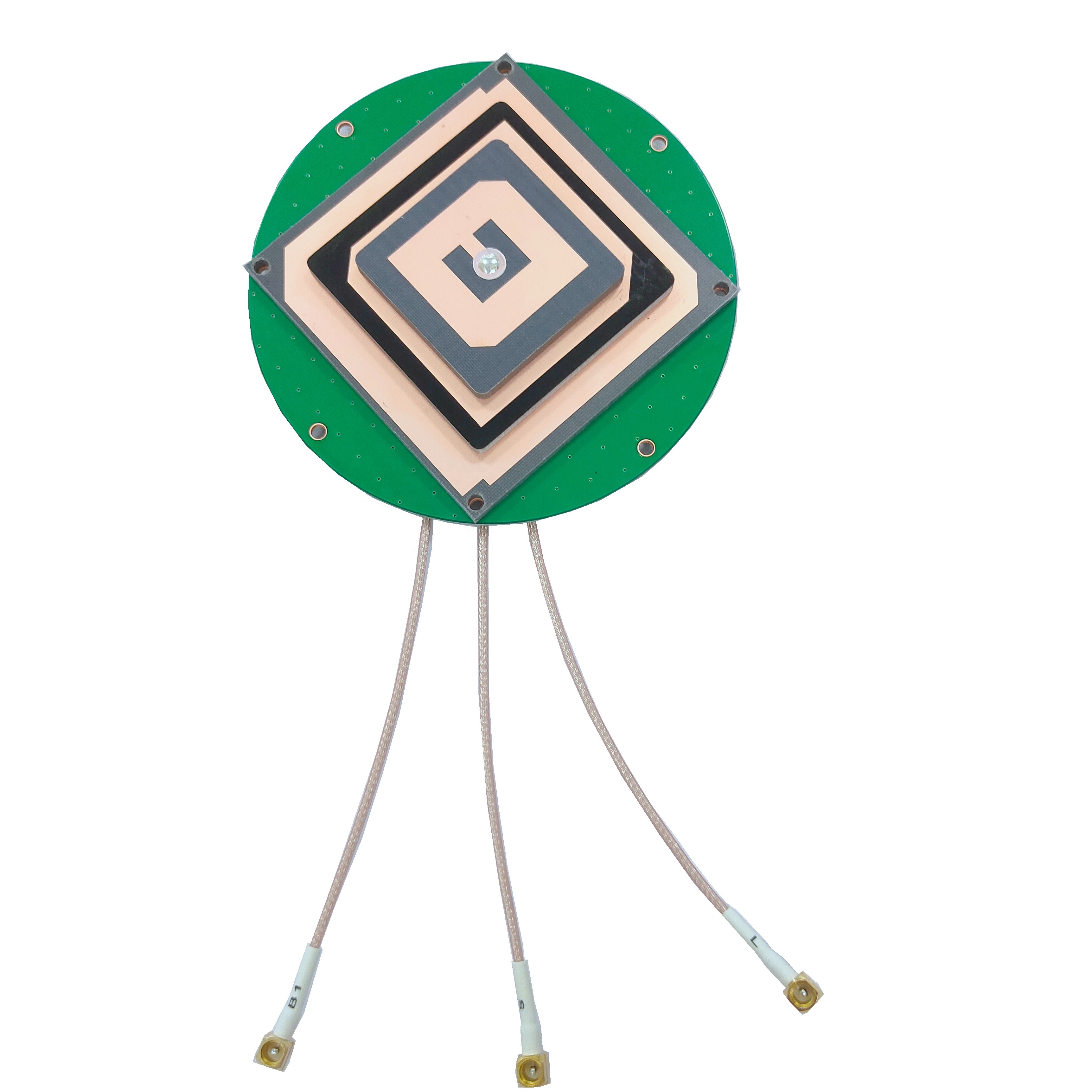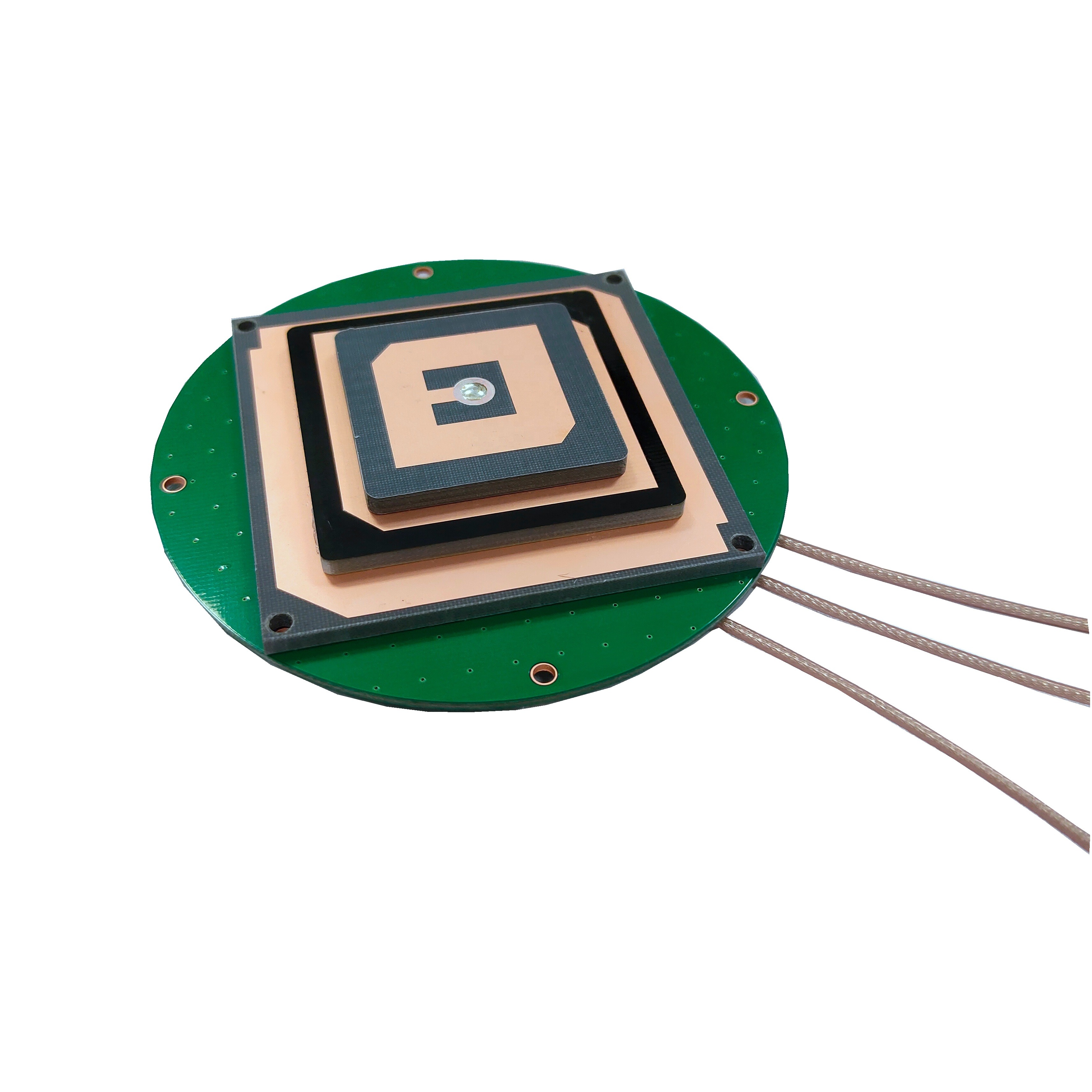Applications
High-precision surveying GNSS antennas are deployed in diverse fields where accuracy is non-negotiable:
Cadastral and Land Surveying: These antennas define legal land boundaries with sub-centimeter precision, ensuring compliance with local land registry standards. Surveyors use them to map property lines, resolve land disputes, and update cadastral databases, reducing the risk of legal challenges due to inaccurate measurements.
Infrastructure Construction and Monitoring: In large-scale projects like high-speed railways, bridges, and skyscrapers, the antennas guide construction equipment (e.g., excavators, graders) to follow design plans exactly. After construction, they monitor structural stability—for example, measuring tiny movements in a bridge’s deck caused by traffic or temperature changes—to detect early signs of stress.
Precision Agriculture: Farmers use these antennas to guide autonomous tractors, planters, and harvesters with centimeter accuracy. This enables precise seed placement, variable-rate fertilization, and targeted irrigation, reducing input costs by 10–20% and improving crop yields. The antennas also map soil variability, helping farmers optimize land use.
Environmental and Climate Monitoring: Researchers use high-precision GNSS antennas to track natural phenomena such as glacier retreat, sea-level rise, and tectonic plate movement. For example, antennas installed on Antarctic glaciers measure annual ice loss with millimeter precision, providing critical data for climate change models. In volcanic regions, they detect pre-eruption ground deformation, enabling early warnings.
Mining and Quarrying: Mining operations use these antennas to map ore deposits, monitor slope stability, and guide drilling equipment. The accuracy ensures that ore is extracted efficiently, minimizing waste, while slope monitoring prevents catastrophic landslides. The antennas also help comply with environmental regulations by tracking the impact of mining on surrounding terrain.
Aerospace and Defense: In aerospace, these antennas calibrate satellite ground stations and align aircraft components during manufacturing, ensuring precision in critical systems. Defense applications include guiding precision weapons, mapping battlefields, and tracking military assets with sub-meter accuracy.
Future Trends
The evolution of high-precision surveying GNSS antennas is driven by advances in satellite technology, materials science, and artificial intelligence:
Integration with Next-Generation GNSS Constellations: As new GNSS constellations (e.g., BeiDou-3, Galileo Second Generation) expand and add new frequency bands (e.g., GPS L1C, Galileo E6), antennas will support an even broader range of signals. This will enhance redundancy and accuracy, especially in polar regions or remote areas where current constellations have gaps.
AI-Driven Error Mitigation: Machine learning algorithms will be integrated into antennas or receivers to dynamically detect and correct errors. For example, AI can analyze historical multipath patterns in a specific location to predict and filter out interference in real time, improving accuracy in urban or reflective environments. AI can also optimize LNA gain and filter settings based on current signal conditions.
Miniaturization with Metamaterials: Metamaterials—engineered materials with unique electromagnetic properties—will enable smaller, lighter high-precision antennas. These materials can manipulate radio waves to achieve the same gain and PCV performance as larger antennas but in a compact form factor (e.g., 5–10 cm diameter). This will expand their use in small drones, wearable surveying tools, and IoT sensors.
Quantum-Enhanced Sensing: Research into quantum GNSS receivers could lead to antennas that are immune to jamming and spoofing, while providing even higher accuracy. Quantum sensors use quantum entanglement to measure signal phases with unprecedented precision, potentially pushing accuracy into the sub-millimeter range.
Energy Harvesting and Sustainability: Future antennas will integrate energy harvesting technologies, such as solar cells or RF energy scavengers, to power the LNA and electronics. This will extend battery life in portable applications, reducing the need for frequent recharging. Manufacturers will also use eco-friendly materials (e.g., recycled metals, biodegradable polymers) to reduce environmental impact.
5G and LEO Satellite Integration: 5G networks will enable faster transmission of RTK correction data, extending the range of network RTK (NRTK) to remote areas. Low Earth Orbit (LEO) satellite constellations (e.g., Starlink, OneWeb) will provide global, low-latency correction data, eliminating reliance on ground-based base stations and enabling high-precision positioning anywhere on Earth.
Conclusion
High-precision surveying GNSS antennas are the backbone of modern geospatial measurement, enabling the accuracy and reliability that define critical projects in construction, environmental science, and land management. Their design—optimized for multi-band reception, low PCV, and rugged durability—addresses the unique challenges of field surveying, from EMI interference to extreme weather. By delivering sub-centimeter to millimeter-level accuracy, these antennas have transformed how we map the planet, build infrastructure, and monitor natural systems, replacing labor-intensive traditional methods with efficient, data-driven workflows.
While challenges such as cost, size, and installation complexity persist, ongoing innovations in materials, AI, and satellite technology are addressing these limitations. Future antennas will be smaller, smarter, and more accessible, expanding their role in emerging fields like autonomous construction, precision robotics, and global climate monitoring.
In a world where precise geospatial data is essential for sustainable development, safety, and scientific progress, high-precision surveying GNSS antennas will remain indispensable. Their ability to turn satellite signals into exact coordinates not only drives efficiency and innovation but also ensures that the decisions we make—whether building a bridge, managing farmland, or protecting the environment—are based on the most accurate information available. As technology advances, these antennas will continue to redefine the boundaries of what is possible in geospatial measurement, shaping a more precise and connected world.




































































 Language
Language
 En
En Cn
Cn Korean
Korean

 Home >
Home > 







 18665803017 (Macro)
18665803017 (Macro)













